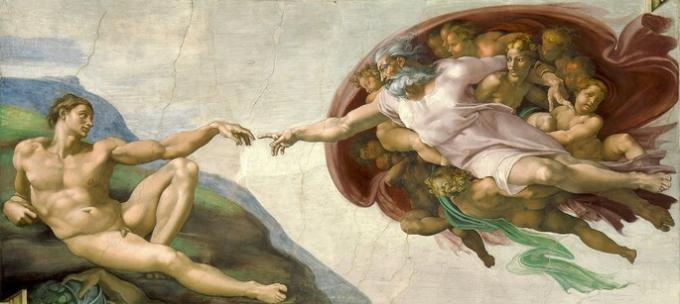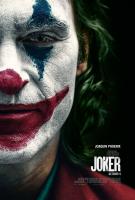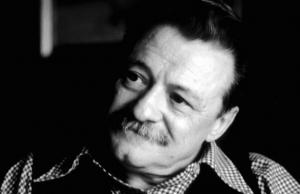15 characteristics of the Renaissance
The Renaissance was a period of history that began from the end of the Black Death in the middle of the 14th century and lasted until the first half of the 16th century. Some consider it the beginning of the modern era and others as the preamble to modernity. If anything, it was a historical turn toward secularization through the promotion of thought scientific and humanistic, processes that were crystallized in the art and literature of the time. But what were the most important characteristics of the Renaissance?
1. Secularization and laicization of knowledge
The main characteristic of the Renaissance lies in the drive for the secularization of society. Secularization is called the transformation of a society organized according to religious doctrine, to a society with diversified and autonomous interests with respect to it.
Secularization brought with it the secularization of knowledge, that is, the possibility of cultivating and promoting knowledge among civil sectors, outside the ecclesiastical domain. This brought with it greater freedom of research and scientific and cultural production.
2. Anthropocentrism and humanism

The Renaissance is defined as an anthropocentric period. This means that the human being becomes the reference center from which the order is structured. sociocultural, displacing theocentric thought (which should not be understood as the passage from a believing society to a agnostic or atheist).
Anthropocentrism was founded on humanism, a philosophical current of that period that exalted the qualities of human nature. This humanism derived from the theological humanism of the late Middle Ages, which allowed the appreciation of being human being as God's favorite creature, leaving the doors open for the new perspective of the Renaissance.
3. Revaluation of Classical Antiquity
The Renaissance found its inspiration in Classical Antiquity, that is, in the study of the thought and art of ancient Greece and Rome. The Greco-Roman past, idealized to a certain extent, became the benchmark. For this reason, this period gave itself the name of Renaissance and had its epicenter in the Italian peninsula, eager to recover the splendor of the Roman era.
4. Assessment of rational thought
The Renaissance generation begins to question medieval beliefs and seeks rational explanations for the most varied phenomena. Rational thought (scientific and philosophical) becomes a tool for the discovery of the world, nature and man.
5. Scientific and technical curiosity

Scientific curiosity was the order of the day in the Renaissance. There were many advances that were recorded in all areas, such as astronomy, anatomy, biology, botany, etc. It was also a time marked by important inventions such as the printing press, which allowed the dissemination of thought among the literate elite.
6. Study of nature in the arts
Curiosity was expressed with special emphasis on the study of nature, which implied removing the veil of mystery that the Middle Ages interposed. The arts were touched by this spirit, which resulted in the perfection of naturalism, that is, in the principle of imitation of nature characteristic of Western art (from Greece to the 19th century inclusive). It specifically involved the following aspects:
- Study and analysis of diaphanous light, thanks to which chiaroscuro emerged.
- Study and analysis of spatial geometry, which favored a new perspective model called "linear" or "vanishing point".
- Detailed study of the anatomy.
You may also like:
- Renaissance: history, characteristics and most important works.
- The Vitruvian Man by Leonardo da Vinci.
7. Art as knowledge and separation from crafts
The creators of the plastic arts who worked from the conscientious study of nature, encouraged by the spirit of the time, understood art as a form of knowledge. Thanks to this, the separation between art and crafts was brewing, which culminated in the reappearance of the artist's signature, which had fallen into disuse during the Middle Ages.
8. Autonomy of art

The new separation between art and crafts, emphasizing the change in production modes (passage from the union to the artist's workshop), is He put before the current classification system in the Middle Ages, which ranked the arts according to content (sacred art / art profane).
9. Search for symmetry, proportion and balance
With Classical Antiquity as a reference, aesthetic values based on symmetry, proportion and balance, developed widely towards during the Greek classical period, they became applied models in the arts and literature.
10. Practice of patronage
Patronage is called the promotion of artistic creation and economic protection of artists. This practice was very common in antiquity. The term derives, in fact, from Gaius Mecenas, a noble Roman promoter and protector of the poets of his time, an initiative that earned him great prestige in his time.
In imitation of Gaius Maecenas, the secular sectors of the Renaissance (no longer only the monarchs and the Church) dedicated to promoting all kinds of arts to honor God, the city and themselves, as the Florentine said Rucellai. With Renaissance patronage, art was also born as an economic investment.
It may interest you: 9 works that show the incomparable genius of Michelangelo.
11. Rise of the gentle-man
With the Renaissance, a new ideal of a person appeared who was called “gentleman-man”. He was referring to the model image of the multiple and learned man, who should have knowledge of all areas (science, arts and humanities). Thus, the idea of the specialist did not exist, but comprehensive knowledge was valued.
12. Emergence of usury and the modern banking system
In the transition from the late Middle Ages to the Renaissance, the class of moneylenders and usurers emerged and, with them, the first modern banks appeared. This process began in the Italian cities of Florence, Venice, and Genoa. The Medici family was one of those who participated in these kinds of activities.
13. Growth of cities
The growth of cities had already started since the late Middle Ages, when surplus production agriculture, along with other factors, stimulated trade and the formation of boroughs, where markets. In the Renaissance, the cities reached a greater boom and were imposed as centers of reference. In fact, in the Italian peninsula, the sociopolitical organization was carried out through the polis, city-states that competed with each other, such as Florence, Rome and Naples.
14. Artistic and literary flourishing
The Renaissance was, above all, a time of great cultural flourishing under schemes of greater compositional, aesthetic and, above all, thematic freedom. Throughout this period, there was a great development of various arts such as literature, architecture, sculpture, and painting. The latter, in fact, was particularly important thanks to the appearance of the oil painting technique, which allowed painting to become independent from fixed supports (walls), favoring collecting.
It may interest you: Leonardo da Vinci: 12 fundamental works.
15. More important works
It is not easy to list the most important works of the Renaissance, since it was an extremely prolific period. However, some are mandatory reference. We suggest below a list of authors and his most outstanding works.
- Sandro Botticelli (1445-1510): The birth of Venus; Spring; Venus and Mars; The Adoration of the Magi.
- Leonardo da Vinci (1452-1519): The Mona Lisa or Mona Lisa; The Last Supper, The Virgin of the Rocks; The lady with the ermine; Saint John Baptist.
- Raphael Sanzio (1483-1520): The school of Athens; The marriages of the Virgin; Self portrait; The Sistine Madonna.
- Donatello (1386-1466):David, Gattamelata; Maria Magdalena; Herod's Feast.
- Michelangelo Buonarroti (1475-1564): David; Sistine Chapel Vault; Moses; Tondo doni; Mercy.
- Lorenzo Ghiberti (1378-1455): Reliefs of the call Gate of paradise of the Batisterio of Florence.
- Filippo Brunelleschi (1377-1446): Dome of Santa María del Fiore.
You may also like:
- The 25 most representative paintings of the Renaissance
- The Birth of Venus by Sandro Botticelli: Analysis and Meaning.



